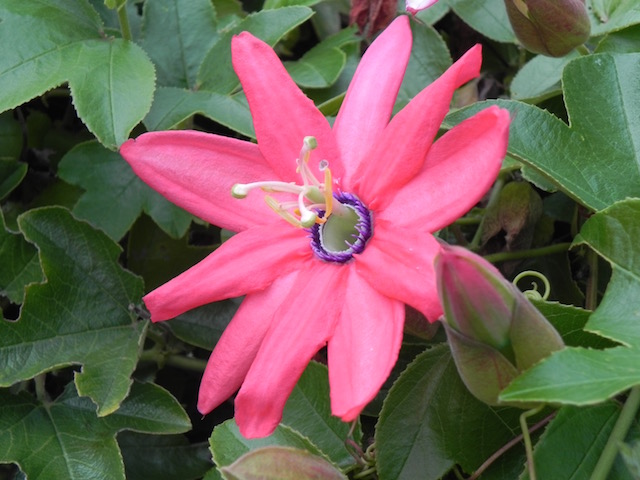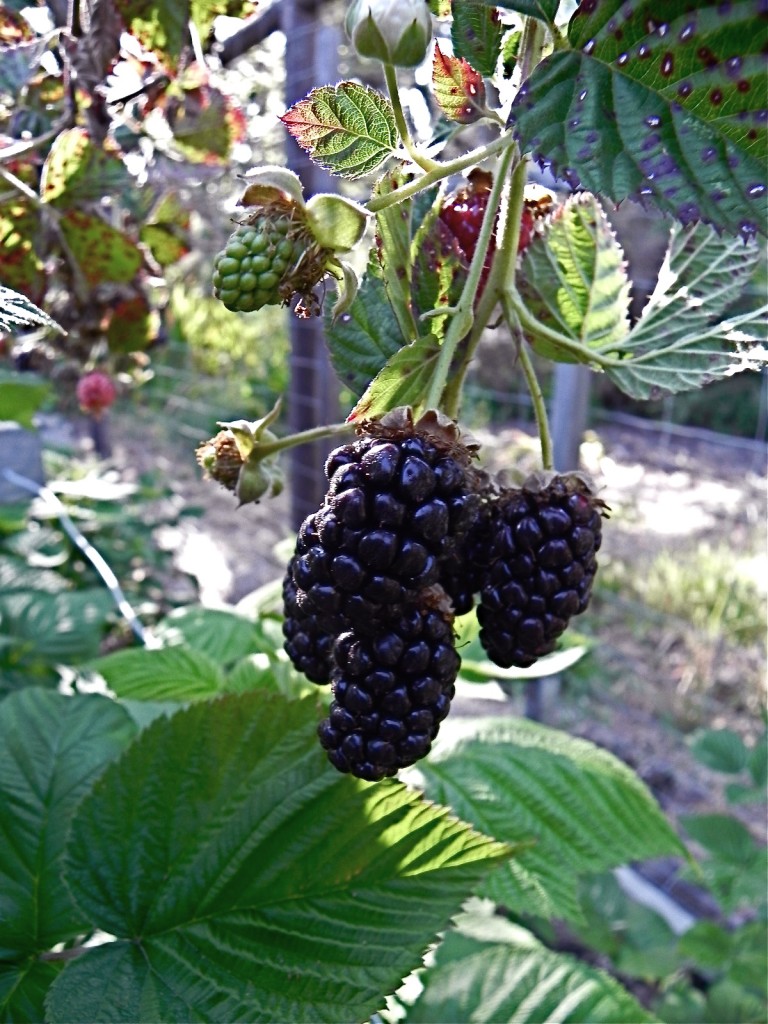
February is here and it’s time to begin gardening along the coast. We’ve had a bit of welcome rain and I can’t stop digging around in that blessed moist earth, planting some of my favorites. Don’t be afraid to plant in the month of February near the ocean, inland you must wait until all chances of frost are over. Until then, you might satisfy yourself by putting in some bare root roses or fruit trees that will not be harmed by late frost.
Along the coast it’s full speed ahead! As I browse through the nursery, I can’t resist a lovely Cecile Brunner rose. I lost a potato vine; one that nearly covered our chicken coop and run. I’m going to replace it with a Brunner rose. I have found the Cecile Brunner climbing rose to be nearly indestructable. By the way, Cecille Brunner was a woman. It can survive nearly any condition as long as you are up to keeping it contained so it doesn’t crawl through the shakes of your house and join you for dinner.
I also bought two Passion Flower vines, Passiflora ‘Coral Seas” (jamesonii), for the back fence. I’ve never gotten any vine to survive on that fence due to gophers and lack of water but I don’t want to give up. We have a passion flower along our fence out on the road and while the deer stop to nibble it occasionally, it grows beautifully along the top with lovely striking flowers that bloom nearly year-around. We’ll give it a try along the back fence. Learning from our previous lesson, the vines are being planted in “gopher baskets” (or some kind of pest management) this time around. For ideas see Pest Control Tips. And of course, I’m replacing some lavender plants. Six tiny plants to fill in where others that have died. The trouble with lavender is, it only “lives well” for about six years, then declines. I love lavender, though, it’s drought-tolerant and will only need a bit of water the first summer.
February along the central coast means that some chores that are done now will save you time later. Keep after those pesky weeds. They’re easy to pull when small and while the soil is moist. Prune hydrangeas and fuchsias before they produce new leaves.

Fertilize plants with slow release fertilizers like bonemeal, cottonseed meal, and well-composted manure. Save the chemical fertilizers for later if you must. Feeding plants too heavily, too early, may shock them into leafing out or flowering before “it is their time”. Fruit trees, however, appreciate a feeding with a balanced commercial fertilizer (like 12-12-12). Do not feed Mediterranean plants. They are not hungry! Cut back perennial grasses as they die down. Shear down to about 4″ to 6″ or dig up and divide.
You can plant now along the coast and in some inland areas. Prepare your soil, then put in seeds of beets, carrots, lettuce, and snow peas. You can plant seeds of parsley, leek, turnips, garlic, shallots, and bulb onion sets.
You can begin planting spring bulbs in February. Calla lilys, cannas, dahlia, daylily, bearded and Dutch iris, and gladiolus are available and ready to be put out.
I’ve been rushing out to plant between our lovely light rains. I just hope it continues. Gardeners are such optimists!
To see and read about passion flowers and fruits go to R.S.Landscape Design at http://rslandscapedesign.blogspot.com/2011/04/passiflora.html.


